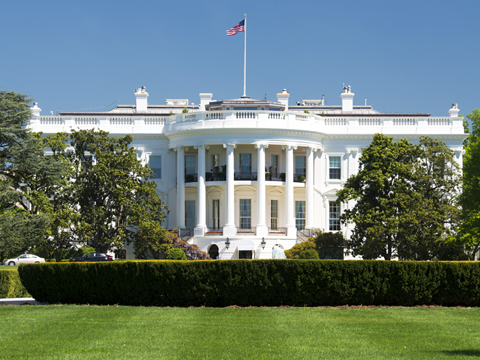
As the United States’ presidential election looms, the Biden-Harris Administration has announced its intent to phase out all single-use plastics across US federal government agencies by 2035 and all single-use plastic products in foodservice, packaging, and events by 2027.
The Administration’s Interagency Policy Committee has released a report – Mobilizing Federal Action on Plastic Pollution: Progress, Principles, and Priorities. It provides an overview of existing and upcoming federal actions intended to cut down on the impact of plastic pollution across plastics’ life cycle; and calls for state, local, Tribal and Territorial governments, local communities, the private sector, and other stakeholders to engage with ‘sustained and coordinated work’ to tackle the plastic pollution crisis.
Apparently, the report marks the first time the federal government has formally acknowledged the severity of the problem, as well as the large-scale effort needed to combat it. Its key principles include the reduction of pollution from the extraction of fossil fuels, including chemicals of concern, air pollutants, and volatile organic compounds that may contain carcinogens.
Data collection must improve in order to fully understand the risks associated with plastic production, the report says; this includes threats to the environment and human health.
The document continues to state that alternative materials and processing methods are being explored by government agencies. Reportedly, new standards will be developed to promote recyclability and reuse; the management of materials will be reworked; and additional research and development will pursue a circular economy – all to ensure compatibility with waste management systems and minimize harm to humans or the planet.
In order to generate less plastic waste, the Administration aims to cut out any materials that are unnecessary, difficult to manage, or likely to end up polluting the environment. Targeted reduction efforts for single-use plastics across federal agencies – for example, the introduction of water refill stations instead of disposable bottles – are expected to lead by example.
The Investing in America agenda is said to aim for ‘environmentally sound’ waste management, especially for communities already struggling under the weight of pollution. Mobilizing Federal Action on Plastic Pollution lays out further action needed to improve the environmental benefits and work-safe management practices, including optimized plastic collection and improved recycling methods.
Additionally, multiple agencies are expected to lead the way in cleaning up existing pollution in the natural environment, including the ocean, and preventing more from being generated. Further action is required to improve the capture of plastics, according to the report, both to direct it into the waste management system and, once there, prevent it from escaping.
In response to the announcement, Erin Simon, vice president and head of Plastic Waste and Business at WWF, commented: “As the single largest consumer in the world, the US federal government has an outsized role to play in curbing the use of problematic and unnecessary plastic products. The Administration’s commitment to removing single-use plastic products across an entity this large goes beyond the positive environmental effects, sending a message to the public and private sector across the world: if we can make change happen at scale, so can you.
“While commitments are important, the ‘how’ is essential. Mobilizing Federal Action on Plastic Pollution provides the strategic analysis needed to meet these goals. It also answers calls from the NGO and business communities, advocating for policies like federal EPR that, if enacted, set us on a path toward solving our domestic plastic problem.
“We’re heartened to see this report doesn’t shy away from the negative impacts that plastics have on human health and analyzes the problem through the full life cycle of plastic. Cleaning up the global plastic mess must start at home.
“And today under President Biden and Vice President Harris’ leadership, the US government is doing exactly that. The world is watching; now is the time for bold commitments and concrete action on plastic.”
The new strategies follow President Biden’s Federal Sustainability Plan, in which the federal government is targeting net-zero procurement by 2050, including the procurement of single-use plastic products. Reusable, compostable, and highly recyclable products are set to replace them in foodservice applications and further the obligations of government agencies under the Executive Order.
Other initiatives already in place include Secretary’s Order 3407, which aims to phase out single-use plastic products and packaging across Interior Department-managed lands by 2032. These efforts are set to include the introduction of more water bottle filling stations, reducing the sale of single-use plastics, and cleaning up plastic pollution in marine environments.
The Environmental Protection Agency also plans to invest $275 million in Solid Waste Infrastructure for Recycling grants under Investing in America. 140 grant selections have been made for improvements to recycling, reuse, and composting infrastructure, improved technical support for local waste management staff, and more.
In similar news, the U.S. Department of Commerce has issued a Notice of Intent and opened a competition for new R&D deliveries to boost domestic capacity for semiconductor advanced packaging. The CHIPS for America programme is set to award $150 million in federal funding to each research area and leverage private sector investments from industry and academia.
Meanwhile, WWF recently released The Blueprint for Credible Action on Plastic Pollution; the guidebook is designed to help companies address their plastic footprint and make measurable environmental, economic, and reputational changes.
If you liked this story, you might also enjoy:
How are the top brands progressing on packaging sustainability?
Sustainable Innovation Report 2024: Current trends and future priorities
Reuse vs. single use – which is better for the environment?
The ultimate guide to global plastic sustainability regulation











No comments yet